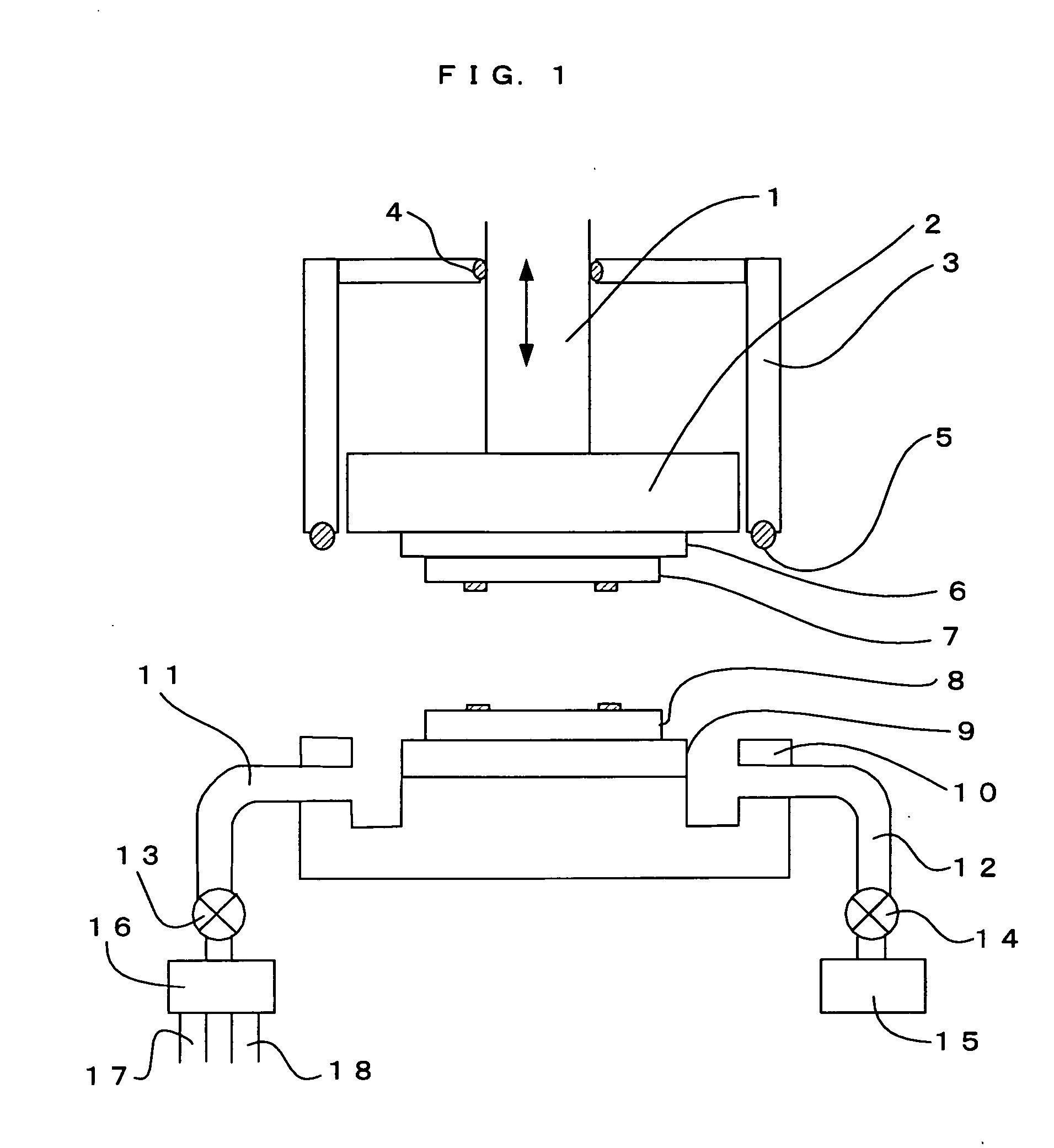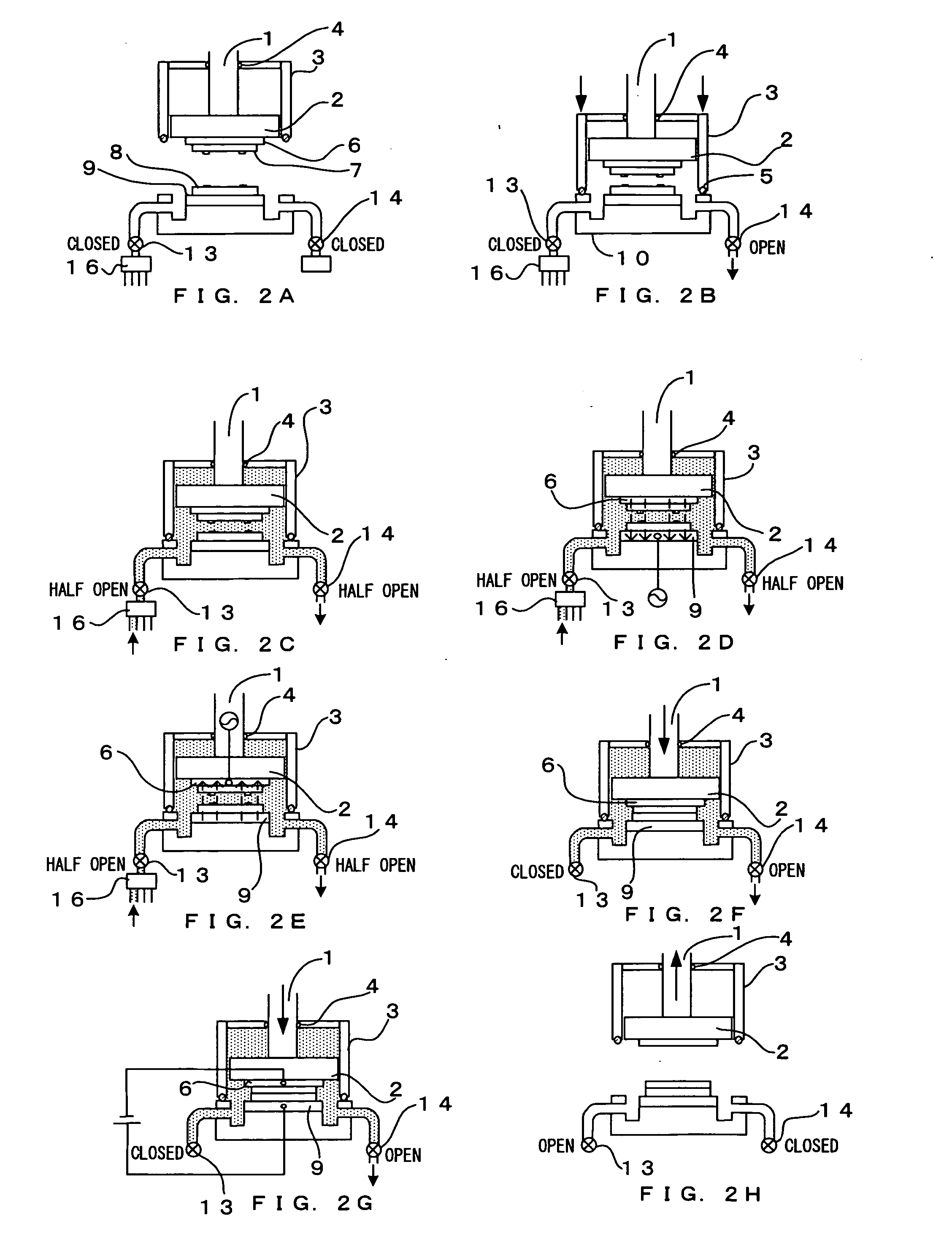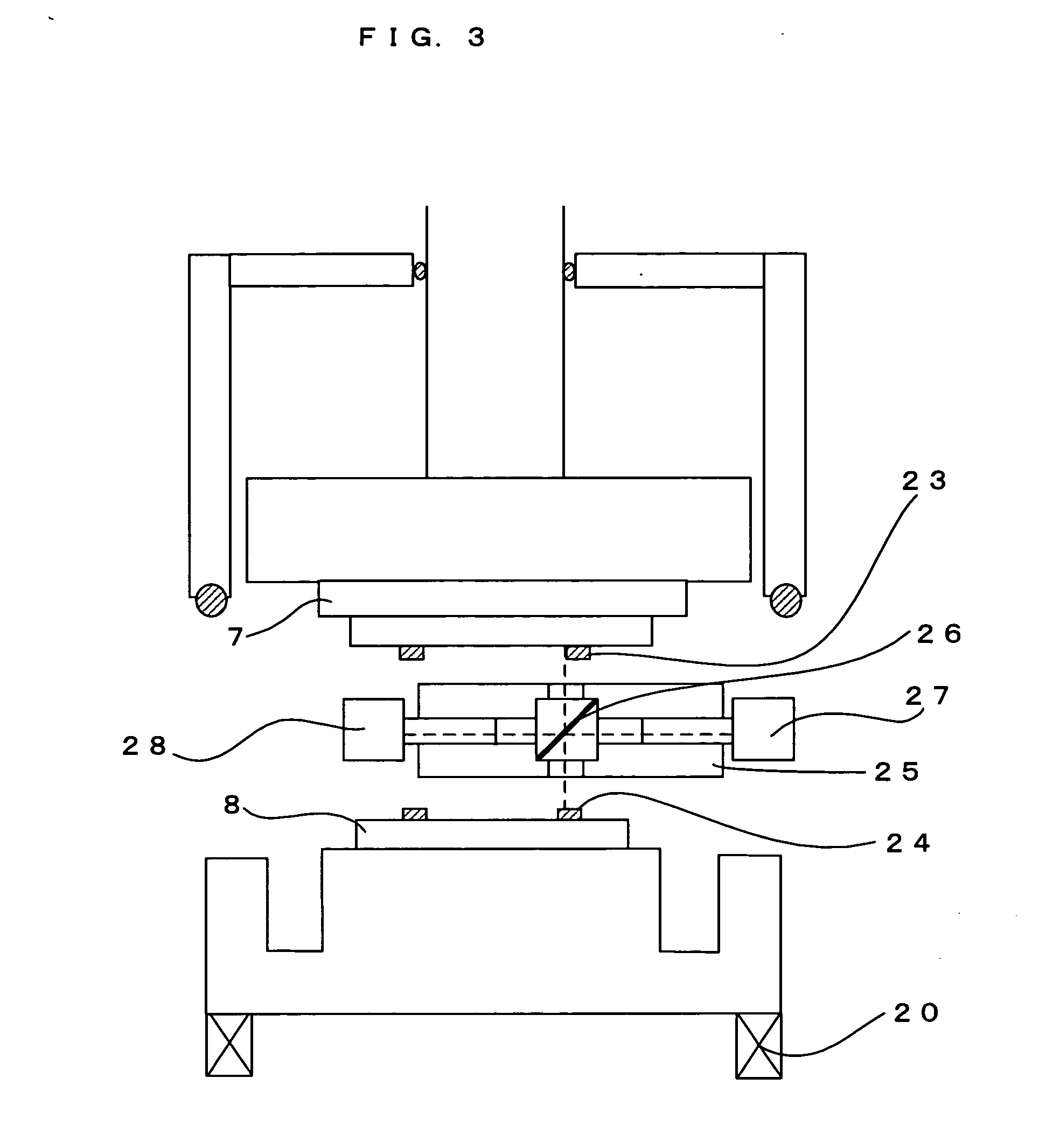Bonding method, device formed by such method, surface activating unit and bonding apparatus comprising such unit
a technology of activating unit and surface, which is applied in the direction of solid-state devices, coatings, basic electric elements, etc., can solve the problems of weak strike force of ions, low strength, and inability to achieve firm bonding for si (semiconductor), ceramic, glass and siosub>2/sub>, etc., to achieve sufficient bonding strength and reduce ion strike force
- Summary
- Abstract
- Description
- Claims
- Application Information
AI Technical Summary
Benefits of technology
Problems solved by technology
Method used
Image
Examples
first embodiment
[0178]FIG. 1 illustrates an apparatus for wafer surface activation and bonding according to a first embodiment of the present invention. In this example, a physical treatment is a method of etching for removing impurities, which is a pretreatment for adhesion of OH groups. This embodiment provides an apparatus in which a chamber is closed while wafers (objects to be bonded) are held facing each other vertically, a surface activation treatment is performed using an Ar plasma and an oxygen plasma in vacuum, followed by bonding, and in some cases, a strength is increased by heating.
[0179] A configuration of the apparatus is divided into a head section which holds an upper wafer 7 and performs a lifting / lowering control and a pressing control using a Z axis 1, and a stage section which holds a lower wafer 8, and in some times, aligns a wafer. A pressure detecting means is incorporated into the Z axis 1, and performs a pressing force control by performing feedback with respect to a torq...
second embodiment
[0198] Hereinafter, a second preferred embodiment of the present invention will be described with reference to the drawings. In this embodiment, a method will be described which is performed in the step of adhesion of OH groups and in which, by changing an ion strike force, adhesion of oxygen is performed by a physical treatment, and adhesion of OH groups is increased by a chemical treatment, thereby performing adhesion of OH groups with high efficiency.
[0199]FIG. 7 illustrates a configuration of a bonding apparatus which performs a plasma treatment in a vacuum according to this embodiment. In this embodiment, the bonding apparatus is an exemplary apparatus which bonds an upper wafer (first object to be bonded) and a lower wafer (second object to be bonded) together.
[0200] Firstly, the apparatus configuration will be described. As illustrated in FIG. 7, a head 207 which holds an upper wafer and a stage 208 which holds a lower wafer 209 are provided in a vacuum chamber 211. The hea...
third embodiment
[0219] As the plasma treatment in which the ion strike force is changed, the plasma electrode is changed in the second embodiment. In a third embodiment, the low-pressure plasma is provided by an RF plasma power supply which can adjust Vdc, so that a Vdc value is changed in the second half of the plasma treatment to reduce the ion strike force. FIG. 10 is a waveform diagram of the RF plasma power supply.
[0220] On the plasma electrode side, electric field is generated, and a speed of striking ions varies depending on the Vdc value. For example, the larger the negative value of Vdc, the more the + oxygen ion is accelerated, so that an ion strike force is increased. As the negative value of Vdc approaches zero, the speed becomes slower, so that the ion strike force is reduced. In this case, there are a number of ions or radicals which are not accelerated, so that a chemical reaction is promoted. When a plasma treatment is performed by setting the Vdc value to be a large negative value...
PUM
| Property | Measurement | Unit |
|---|---|---|
| temperature | aaaaa | aaaaa |
| temperature | aaaaa | aaaaa |
| temperature | aaaaa | aaaaa |
Abstract
Description
Claims
Application Information
 Login to View More
Login to View More - R&D
- Intellectual Property
- Life Sciences
- Materials
- Tech Scout
- Unparalleled Data Quality
- Higher Quality Content
- 60% Fewer Hallucinations
Browse by: Latest US Patents, China's latest patents, Technical Efficacy Thesaurus, Application Domain, Technology Topic, Popular Technical Reports.
© 2025 PatSnap. All rights reserved.Legal|Privacy policy|Modern Slavery Act Transparency Statement|Sitemap|About US| Contact US: help@patsnap.com



